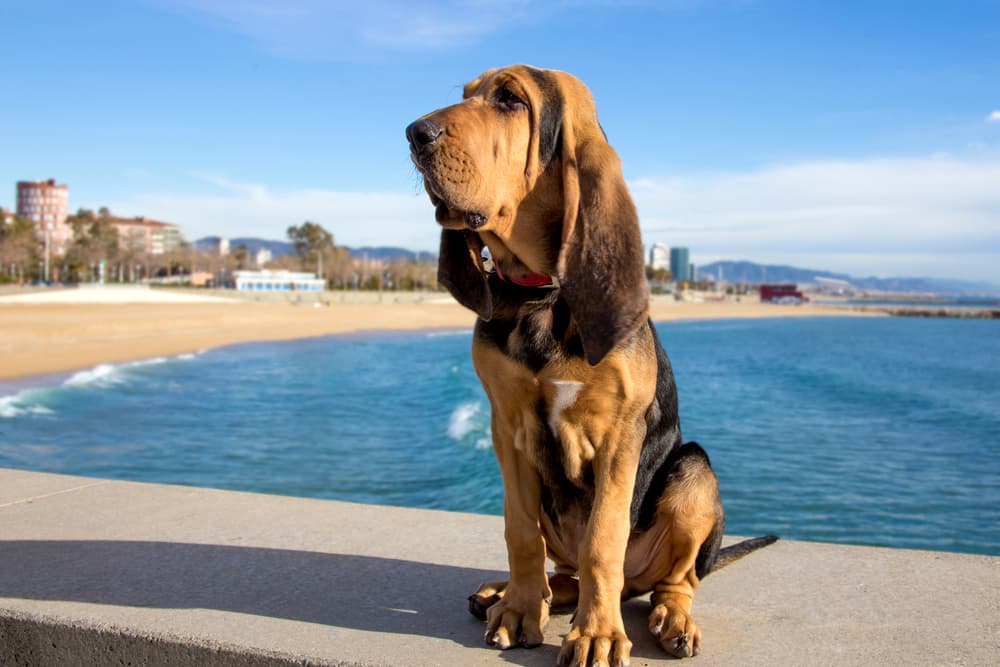Bloodhounds are unmistakable with their unique appearance. They’re renowned for their deep, velvety coats and those endearing, large, floppy ears that make them quite imposing. Their substantial build includes a broad, gracefully arched neck and a lengthy, slender muzzle. Their bodies are adorned with soft, wrinkled skin, found all over, from their bodies and throats to their elbows. These wrinkles serve a functional purpose, providing insulation to keep them warm in chilly weather. Bloodhounds sport a variety of coat colors, ranging from red and yellow to black, with some even featuring white patches on their chest, paws, and tails.
Originally bred as skilled deer and boar trackers, Bloodhounds have transformed into a highly active and intelligent breed. Among all canine counterparts, they lay claim to the most potent olfactory senses, making them unparalleled trackers, particularly when it comes to locating people. This extraordinary sense of smell has earned them a critical role in law enforcement and search and rescue operations.
Bloodhounds are inherently vigilant dogs who relish exploring new surroundings. They tend to get along famously with other animals and people, though they might maintain a bit of aloofness around strangers, as compared to some other dog breeds. Due to their imposing size, they can appear intimidating to those unaccustomed to them. Therefore, it’s crucial to approach them with a calm and unhurried demeanor to avoid unintentional mishaps. However, prospective Bloodhound puppy owners should be prepared for the breed’s well-known traits of stubbornness and sensitivity.
Contrary to the common misconception that Bloodhounds spend their days lounging on the porch, the truth is quite the opposite. These dogs, bred to tirelessly follow scents for extended periods, are incredibly active and necessitate daily exercise. They benefit greatly from long, daily walks, always on a leash, as their commitment to a scent may render them unresponsive to commands.




















